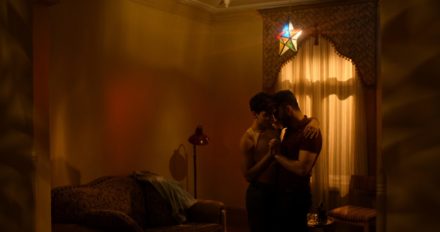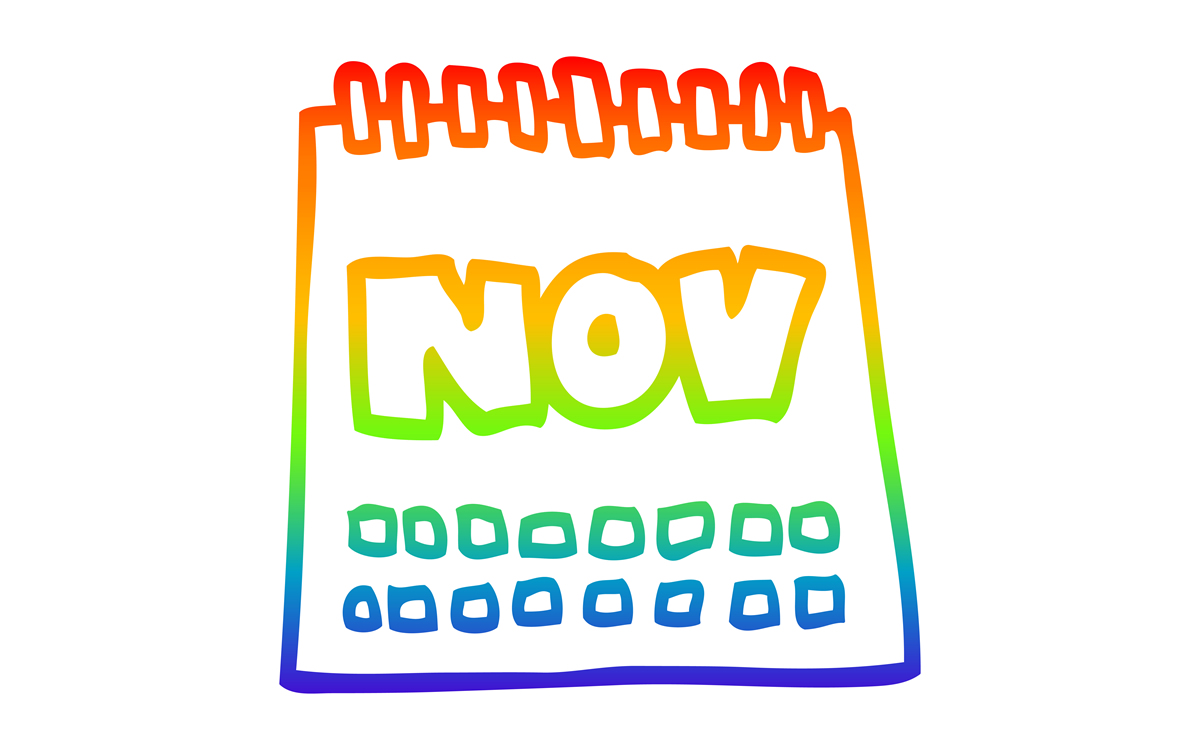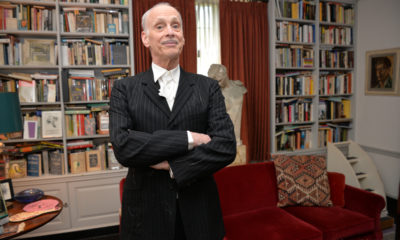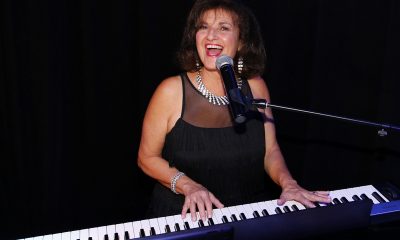Arts & Entertainment
Apple’s ‘Little America’ scores big telling immigrant stories – including queer ones


When “Little America” dropped on Apple TV+ on Friday, expectations were definitely high.
Coming from a writing and producing team that includes “Big Sick” writers Kumail Nanjiani and Emily V. Gordon, alongside “Master of None” co-creator Alan Yang, Lee Eisenberg, Joshuah Bearman and Joshua Davis, the immigrant-themed anthology show was already being critically lauded, and the fledgling streaming service had so much confidence in their new series they they had renewed it for a second season before the first had even made its debut.
Judging from the response of critics and audiences after the January 17 premiere, Apple’s confidence was well-founded.
TV Line called it Apple TV’s “best show yet,” while BGR Online said it “justifies a subscription all by itself.” The LA Times proclaimed it as “the crown jewel of TV’s immigration wave.”
On social media, viewers have been equally enthusiastic in their praise, with comments on Twitter under the “Little America” hashtag saying things like “Loved Little America so much that I watched it all in one go,” and “This is something special that should be shared.”
Based on a true stories series in Epic Magazine, the show goes “beyond the headlines,” as the official description reads, “to look at the funny, romantic, heartfelt, inspiring and unexpected lives of immigrants in America, at a time when their stories are more relevant than ever.” Each stand-alone episode relates the narrative of a different American immigrant, following the hopes, dreams, and hardships of the immigrant experience. The stories are powerful enough in their own right, and inescapably political in today’s oppressively nationalistic climate – indeed, as the Pakistani-American Nanjiani recently observed in an interview, “Just by saying that immigrants are human beings with hopes and desires and likes and dislikes in this climate is a radical statement” – but the show’s fine writing and acting keep the focus on character, which makes every episode just as inescapably human.
While each episode is a gem unto itself, LGBTQ viewers will undoubtedly find particular affinity with the season’s final installment – “The Son,” directed by Stephen Dunn, who also co-wrote with Amrou Al-Kadhi. It tells the story of Rafiq, a closeted Syrian man whose inadvertent outing to his family sparks an escape that will ultimately bring him to America. Based on the real-life story of a Syrian named Shadi, it’s an emotional roller-coaster ride that offers a layered and compassionate document of authentic queer experience; for LGBTQ audiences, the young protagonist’s journey – his escape from the homophobia and repression of his family and their culture, his building of a “queer family” along the way, and his joy upon finding himself in a place where he can not only finally be free, but be and accepted and loved, just as he is, by the people around him – should be profoundly relatable.
What makes it all the more profound, sadly, is that the true story on which the episode is based would have a very different outcome if it happened today. As revealed by Dunn in an interview with Queerty, the real-life Rafiq would have been denied his asylum request if it had been submitted in Trump’s America; indeed, the episode “almost never happened” because the actor chosen to play Rafiq’s more effeminate friend Zain (Adam Ali, a Lebanese-born resident of Manchester, UK) was unable to enter America for filming due to Trump’s “travel ban.” Fortunately, the producers and the studio were willing to undergo the considerable difficulty of moving production from New Jersey to Canada – a decision that Dunn says left him “floored.”
Watching “The Son,” audiences will undoubtedly agree with Dunn’s assertion that Ali was the only actor for the role; he is utterly genuine and endearing, and his own journey is reflected onscreen by an inner strength and resilience that can never really be faked. He is the perfect grounding force for Haaz Sleiman, whose quietly desperate longing as Rafiq captures our hearts from the moment we meet him, and between the two of them, these actors bring us to a climactic scene that packs a bigger emotional punch than most of us would ever expect from a 32-minute-long episode of television.
No spoilers here, but once you’ve watched, you’ll never listen to Kelly Clarkson the same way again.
Watch the official trailer for “Little America” below.
Movies
Superb direction, performances create a ‘Day’ to remember
A rich cinematic tapestry with deep observations about art, life, friendship

According to writer/director Ira Sachs, “Peter Hujar’s Day” is “a film about what it is to be an artist among artists in a city where no one was making any money.” At least, that’s what Sachs – an Indie filmmaker who has been exploring his identities as both a gay and Jewish man onscreen since his 1997 debut effort, “The Delta” – told IndieWire, with tongue no doubt firmly planted in cheek, in an interview last year.
Certainly, money is a concern in his latest effort – which re-enacts a 1974 interview between photographer Peter Hujar (Ben Whishaw) and writer Linda Rosenkrantz (Rebecca Hall), as part of an intended book documenting artists over a single 24-hour period in their lives – and is much on the mind of its titular character as he dutifully (and with meticulous detail) recounts the events of his previous day during the course of the movie. To say it is the whole point, though, is clearly an overstatement. Indeed, hearing discussions today of prices from 1974 – when the notion of paying more than $7 for Chinese takeout in New York City seemed outrageous – might almost be described as little more than comic relief.
Adapted from a real-life interview with Hujar, which Rosenkrantz published as a stand-alone piece in 2021 (her intended book had been abandoned) after a transcript was discovered in the late photographer’s archives, “Peter Hujar’s Day” inevitably delivers insights on its subject – a deeply influential figure in New York culture of the seventies and eighties, who would go on to document the scourge of AIDS until he died from it himself, in 1987. There’s no plot, really, except for the recalled narrative itself, which involves an early meeting with a French journalist (who is picking up Hujar’s images of model Lauren Hutton), an afternoon photo shoot with iconic queer “Beat Generation” poet/activist Allen Ginsburg, and an evening of mundane social interaction over the aforementioned Chinese food. Yet it’s through this formalized structure – the agreed-upon relation of a sequence of events, with the thoughts, observations, and reflections that come with them – that the true substance shines through.
In relaying his narrative, Hujar exhibits the kind of uncompromising – and slavishly precise – devotion to detail that also informed his work as a photographer; a mundane chronology of events reveals a universe of thought, perception, and philosophy of which most of us might be unaware while they were happening. Yet he and Rosenkrantz (at least in Sachs’ reconstruction of their conversation) are both artists who are keenly aware of such things; after all, it’s this glimpse of an “inner life,” of which we are rarely cognizant in the moment, that was/is their stock-in-trade. It’s the stuff we don’t think of while we’re living our lives: the associations, the judgments, the selective importance with which we assign each aspect of our experiences, that later become a window into our souls – if we take the opportunity to look through it. And while the revelations that come may occasionally paint them in a less-than-idealized light (especially Hujar, whose preoccupations with status, reputation, appearances, and yes, money, often emerge as he discusses the encounter with Ginsberg and his other interactions), they never feel like definitive interpretations of character; rather, they’re just fleeting moments among all the others, temporary reflections in the ever-ongoing evolution of a lifetime.
Needless to say, perhaps, “Peter Hujar’s Day” is not the kind of movie that will be a crowd-pleaser for everyone. Like Louis Malle’s equally acclaimed-and-notorious “My Dinner With Andre” from 1981, it’s essentially an action-free narrative comprised entirely of a conversation between two people; nothing really happens, per se, except for what we hear described in Hujar’s description of his day, and even that is more or less devoid of any real dramatic weight. But for those with the taste for such an intellectual exercise, it’s a rich and complex cinematic tapestry that rewards our patience with a trove of deep observations about art, life, and friendship – indeed, while its focus is ostensibly on Hujar’s “day,” the deep and intimate love between he and Rosenkrantz underscores everything that we see, arguably landing with a much deeper resonance than anything that is ever spoken out loud during the course of the film – and never permits our attention to flag for even a moment.
Shooting his movie in a deliberately self-referential style, Sachs weaves the cinematic process of recreating the interview into the recreation itself, bridging mediums and blurring lines of reality to create a filmed meditation that mirrors the inherent artifice of Rosenkrantz’s original concept, yet honors the material’s nearly slavish devotion to the mundane minutiae that makes up daily life, even for artists. This is especially true for both Hujar and Rosenkrantz, whose work hinges so directly to the experience of the moment – in photography, the entire end product is tied to the immediacy of a single, captured fragment of existence, and it is no less so for a writer attempting to create a portrait (of sorts) composed entirely of fleeting words and memories. Such intangibles can often feel remote or even superficial without further reflection, and the fact that Sachs is able to reveal a deeper world beyond that surface speaks volumes to his own abilities as an artist, which he deploys with a sure hand to turn a potentially stagnant 75 minutes of film into something hypnotic.
Of course, he could not accomplish that feat without his actors. Whishaw, who has proven his gifts and versatility in an array of film work including not only “art films” like this one but roles from the voice of Paddington Bear to “Q” in the Daniel Craig-led “James Bond” films, delivers a stunning performance, carrying at least 75% of the film’s dialogue with the same kind of casual, in-the-moment authenticity as one might expect at a dinner party with friends; and though Hall has less speaking to do, she makes up for it in sheer presence, lending a palpable sense of respect, love, and adoration to Rosenkrantz’s relationship with Hujar.
In fact, by the time the final credits role, it’s that relationship that arguably leaves the deepest impression on us; though these two people converse about the “hoi polloi” of New York, dropping legendary names and reminding us with every word of their importance in the interwoven cultural landscape – evoked with the casual air of everyday routine before it becomes cemented as history – of their era, it’s the tangible, intimate friendship they share that sticks with us, and ultimately feels more important than any of the rest of it. For all its trappings of artistic style, form, and retrospective cultural commentary, it’s this simple, deeply human element that seems to matter the most – and that’s why it all works, in the end. None of its insights or observations would land without that simple-but-crucial link to humanity.
Fortunately, its director and stars understand this perfectly, and that’s why “Peter Hujar’s Day” has an appeal that transcends its rarified portrait of time, place, and personality. It recognizes that it’s what can be read between the lines of our lives that matters, and that’s an insight that’s often lost in the whirlwind of our quotidian existence.
Out & About
Gala Hispanic Theatre’s Flamenco Festival returns

Gala Hispanic Theater will host the 21st Annual “Fuego Flamenco Festival” from Thursday, Nov. 6 to Saturday, Nov. 22.
The festival will feature American and international artists who will gather in the nation’s capital to celebrate the art of Flamenco. Guests can save 20% on tickets with a festival pass.
The festival kicks off now through Nov. 10 with the D.C. premiere of Crónica de un suceso, created, choreographed and performed by Rafael Ramírez from Spain, accompanied by renowned flamenco singers and musicians. In this new show, Ramírez pays homage to the iconic Spanish Flamenco artist Antonio Gades who paved the way for what Flamenco is today. GALA’s engagement is part of an eight-city tour of the U.S. by Ramírez and company.
The magic continues Nov. 14-16 with the re-staging of the masterpiece Enredo by Flamenco Aparicio Dance Company, a reflection of the dual nature of the human experience, individual and social, which premiered at GALA in 2023.
For more information, visit the theatre’s website.

Friday, November 7
“Center Aging Friday Tea Time” will be at 12 p.m. in person at the DC Center for the LGBT Community’s new location at 1827 Wiltberger St., N.W. To RSVP, visit the DC Center’s website or email [email protected].
Go Gay DC will host “LGBTQ+ Community Social” at 7 p.m. at Silver Diner Ballston. This event is ideal for making new friends, professional networking, idea-sharing, and community building. This event is free and more details are available on Eventbrite.
Saturday, November 8
Go Gay DC will host “LGBTQ+ Community Brunch” at 12 p.m. at Freddie’s Beach Bar & Restaurant. This fun weekly event brings the DMV area LGBTQ+ community, including allies, together for delicious food and conversation. Attendance is free and more details are available on Eventbrite.
Sunday Supper on Saturday will be at 2 p.m. at the DC Center for the LGBT Community. This event will be full of food, laughter and community. For more information, email [email protected].
Monday, November 10
“Center Aging: Monday Coffee Klatch” will be at 10 a.m. on Zoom. This is a social hour for older LGBTQ adults. Guests are encouraged to bring a beverage of choice. For more information, contact Adam ([email protected]).
“Soulfully Queer: LGBTQ+ Emotional Health and Spirituality Drop-In” will be at 3 p.m. at the DC Center for the LGBT Community. This group will meet weekly for eight weeks, providing a series of drop-in sessions designed to offer a safe, welcoming space for open and respectful conversation. Each session invites participants to explore themes of spirituality, identity, and belonging at their own pace, whether they attend regularly or drop in occasionally. For more details visit the DC Center’s website.
Genderqueer DC will be at 7 p.m. on Zoom. This is a support group for people who identify outside of the gender binary, whether you’re bigender, agender, genderfluid, or just know that you’re not 100% cis. For more details, visit genderqueerdc.org or Facebook.
Wednesday, November 12
Job Club will be at 6 p.m. on Zoom. This is a weekly job support program to help job entrants and seekers, including the long-term unemployed, improve self-confidence, motivation, resilience and productivity for effective job searches and networking — allowing participants to move away from being merely “applicants” toward being “candidates.” For more information, email [email protected] or visit thedccenter.org/careers.
“Gay Men Speed Dating” will be at 7 p.m. at Public Bar Live. This is a fresh alternative to speed dating and matchmaking in a relaxed environment. Tickets start at $37 and are available on Eventbrite.
Thursday, November 13
The DC Center’s Fresh Produce Program will be held all day at the DC Center for the LGBT Community. People will be informed on Wednesday at 5 p.m. if they are picked to receive a produce box. No proof of residency or income is required. For more information, email [email protected] or call 202-682-2245.
Virtual Yoga Class will be at 7 p.m. on Zoom. This is a free weekly class focusing on yoga, breathwork, and meditation. For more details, visit the DC Center for the LGBT Community’s website.
-

 District of Columbia3 days ago
District of Columbia3 days ago‘Sandwich guy’ not guilty in assault case
-

 Sports3 days ago
Sports3 days agoGay speedskater racing toward a more inclusive future in sports
-

 Celebrity News5 days ago
Celebrity News5 days agoJonathan Bailey is People’s first openly gay ‘Sexiest Man Alive’
-

 Michigan5 days ago
Michigan5 days agoFBI thwarts Halloween terror plot targeting Mich. LGBTQ bars




















